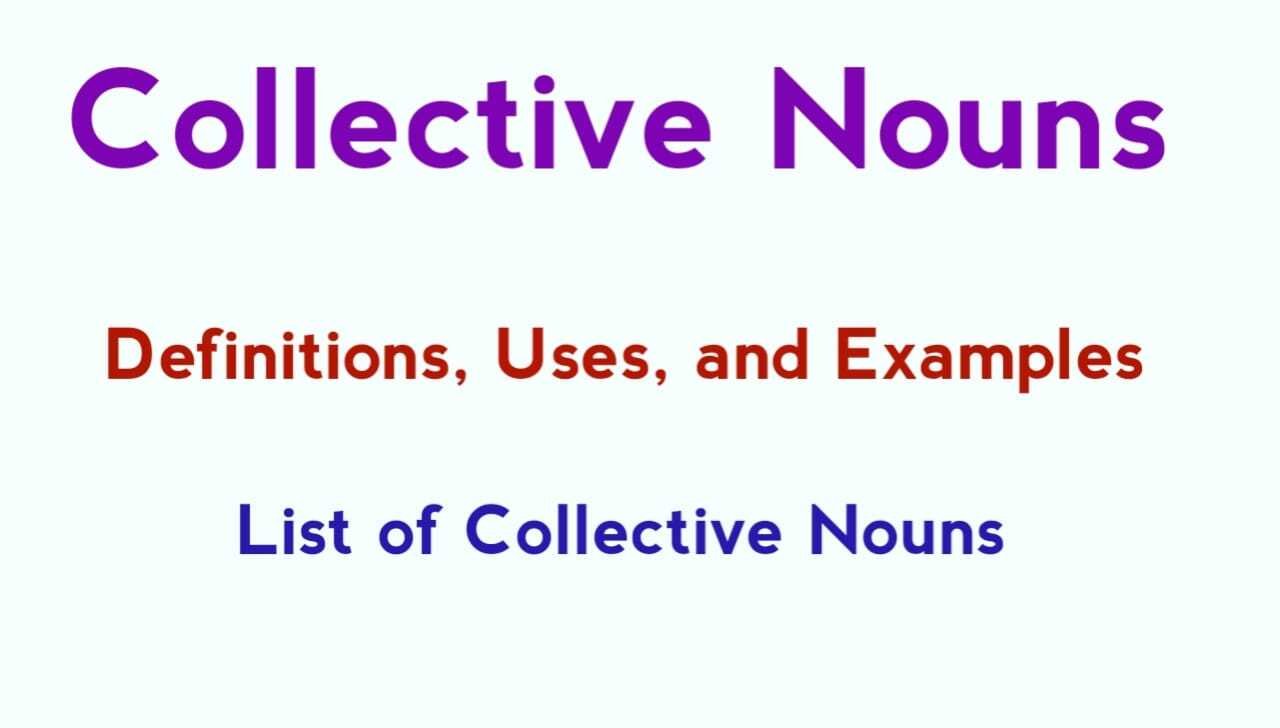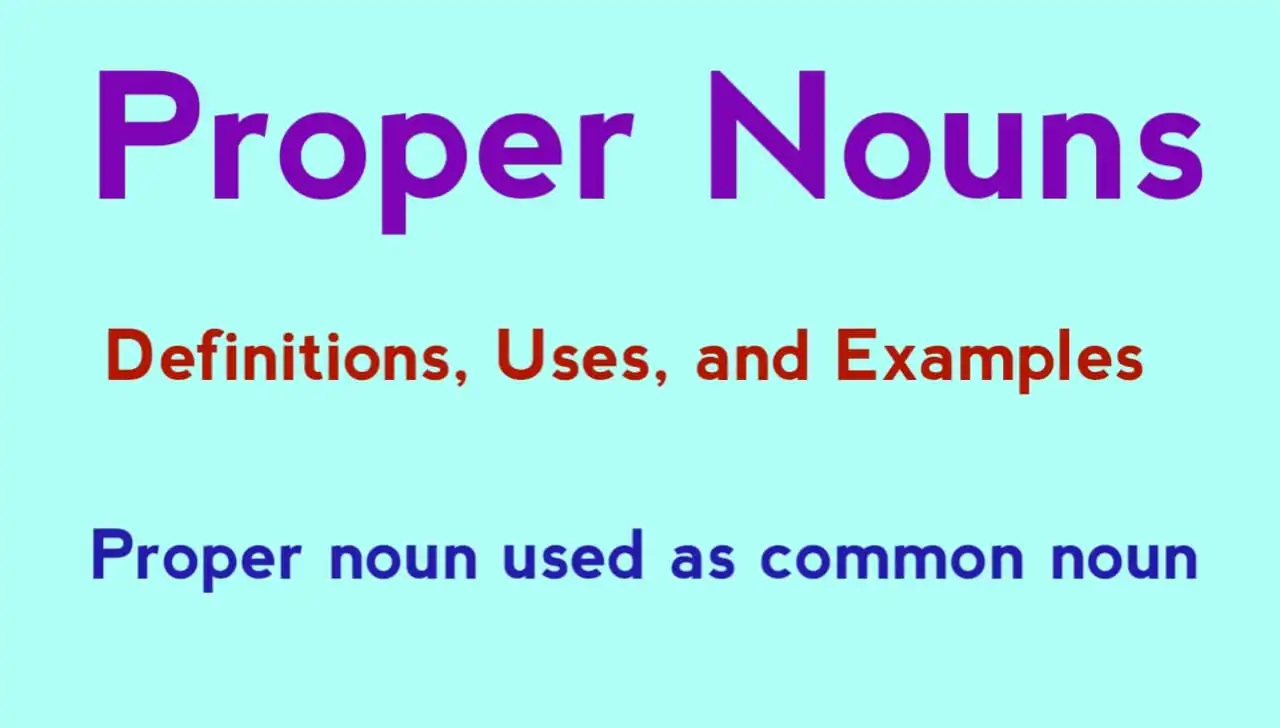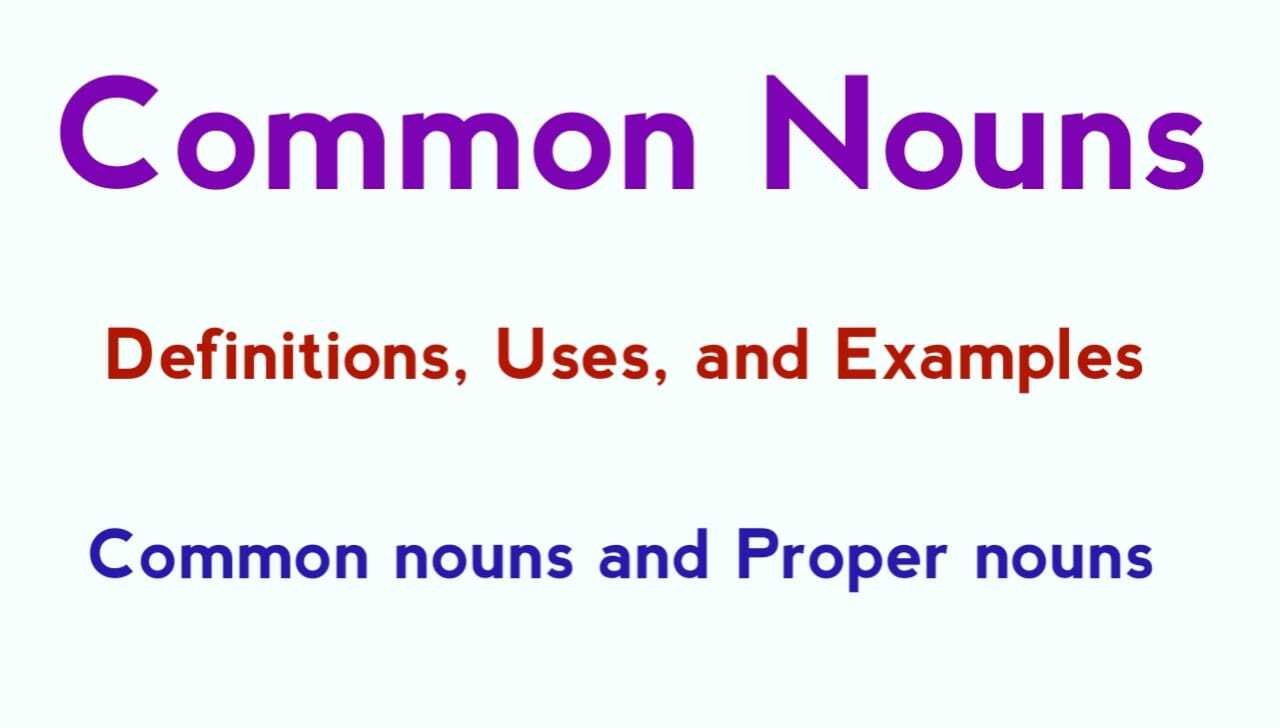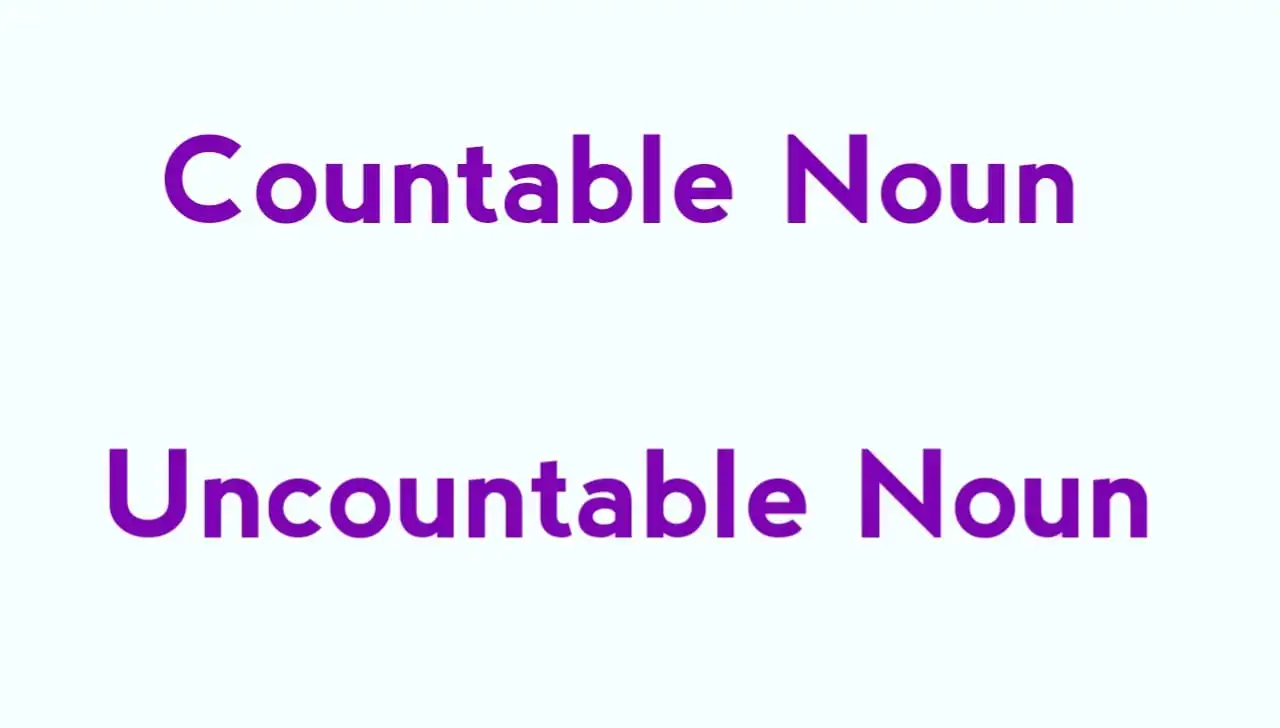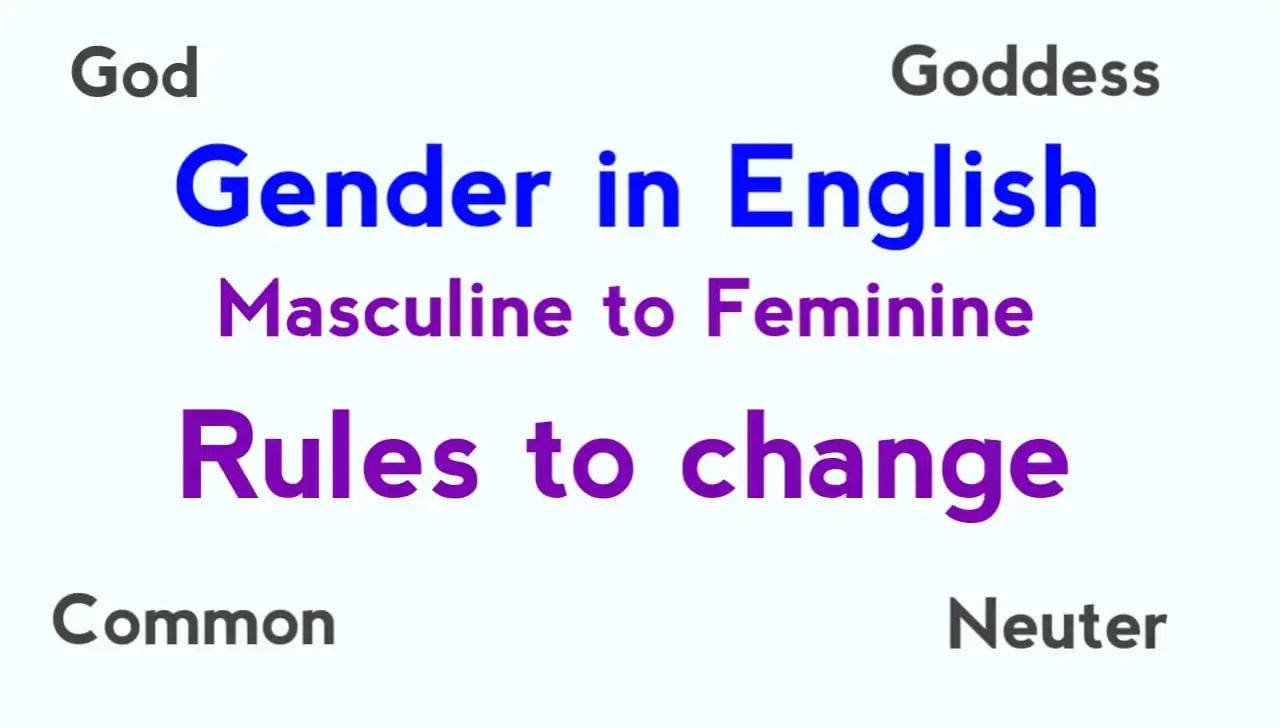Explore the world of collective noun with our comprehensive guide. Learn the definition, discover numerous examples, and access a handy list of collective nouns for various categories. Enhance your language skills and communication by delving into the intriguing realm of collective nouns.
A collective noun is the name of a group or collection of persons or things taken together and spoken of as one complete whole.
What is a Collective Noun
A collective noun is a singular noun that refers to a group or collection of people, animals, things, or concepts as a single entity. It is used to describe a single unit or entity that consists of multiple individual components. For example, “team,” “herd,” and “committee” are collective nouns that represent groups of individuals.
Examples in Sentences:
(1) A herd of elephants is passing.
(2) The jury found the prisoner guilty.
(3) The police dispersed the crowd.
(4) A pack of dogs was chasing him.
(5) A crowd of people gathered at the fair.
In the above example (1) “ a herd of elephants ”, there may be many elephants in the Paddy field but there is only one herd. Here, “elephant ” is a common noun because it may stand for any and every elephant; but “ herd ” is a collective noun because it stands for all the elephants taken together at once, and not for anyone elephant taken separately.
Similarly, “ pack of dogs ”, “a crowd of people ” “ pack ”, and “crowd ” are collective nouns as they stand for all the “ dogs ” and “ people ” taken together at once and not for anyone “ dog ” or “ person” taken separately.
Read more:
Know about Nouns and Types
Quiz on nouns
Collective Noun Categories
1. People: Collective nouns can describe groups of people, such as a “team” of athletes, a “committee” of experts, or an “audience” of spectators.
2. Animals: They are commonly used to refer to groups of animals, like a “herd” of cattle, a “flock” of birds, or a “pride” of lions.
3. Objects: Collective nouns can also represent collections of objects or things, such as a “stack” of books, a “bouquet” of flowers, or a “fleet” of ships.
4. Concepts: In some cases, collective nouns are applied to abstract concepts, like a “wealth” of knowledge, a “library” of information, or a “sea” of troubles.
5. Locations: Collective nouns can describe groups of locations or places, such as a “cluster” of islands, a “chain” of mountains, or a “row” of houses
6. Professions: They can be used to represent groups of professionals or practitioners, like a “panel” of judges, a “faculty” of teachers, or a “crew” of astronauts.
7. Food: In culinary contexts, collective nouns can describe groups of food items, such as a “bunch” of grapes, a “bag” of rice, or a “bottle” of wine.
8. Time: Occasionally, they are used to describe groups of time periods, like a “span” of decades, an “era” of history, or a “minute” of silence.
9. Insects: Collective nouns are also applied to groups of insects, like a “swarm” of bees, a “colony” of ants, or a “cloud” of locusts.
10. Vehicles: In transportation contexts, collective nouns can represent groups of vehicles, such as a “fleet” of cars, a “squadron” of planes, or a “convoy” of trucks.
12. Plants: Collective nouns can describe groups of plants or trees, such as a “grove” of trees, a “row” of corn, or a “bed” of flowers.
12. Music: In musical contexts, collective nouns can refer to groups of musical instruments, like an “orchestra” of violins, a “choir” of voices, or a “band” of musicians.
13. Ships: Collective nouns are used to describe groups of ships or vessels, such as a “fleet” of warships, an “armada” of sailing ships, or a “flotilla” of small boats.
14. Letters: In typography, collective nouns can represent groups of letters, like a “block” of text, a “line” of text, or a “paragraph” of text.
15. Stars: In astronomy, collective nouns can describe groups of stars, such as a “constellation” of stars, a “galaxy” of stars, or a “cluster” of stars.
These additional examples illustrate how collective nouns can be applied in various specialized contexts to describe groups or collections of items or entities.
Collective Noun Examples in Sentences
Team: The soccer team won the championship last night.
Herd: A herd of cattle grazed peacefully in the meadow.
Flock: The flock of birds flew south for the winter.
Pack: The pack of wolves hunted together in the moonlight.
Group: Our study group meets every Friday to prepare for exams.
Hive: The hive of bees produced a lot of honey this season.
Audience: The audience applauded loudly after the amazing performance.
Army: The army marched in formation during the parade.
Committee: The committee discussed the proposal for hours before reaching a decision.
Fleet: The naval fleet is heading towards the coast for a training exercise.
List of Collective Nouns
Flock: A group of birds, usually of the same species, that fly or move together.
Herd: A collection of large animals, such as cattle, sheep, or buffalo, that graze or move together.
Swarm: A large number of insects, like bees or locusts, that move together as a group.
Pack: A group of animals, often predators like wolves or dogs, that hunt or travel together.
Troop: A collection of soldiers or scouts organized for a specific purpose.
Team: A group of individuals, often athletes, working together to achieve a common goal, such as winning a game.
Audience: The assembled group of spectators or listeners at an event or performance.
Committee: A group of people appointed or elected to make decisions or take actions on a particular matter.
Crew: A team of individuals who work together on a ship, aircraft, or in a similar operational setting.
Staff: The employees or workers of an organization or business.
Pod: A group of marine animals, such as dolphins or whales, that swim together.
Gaggle: A collection of geese, usually on land or in water.
Troupe: A company or group of performers, like actors or dancers, who work together in a theatrical production.
Cluster: A group of similar items or entities that are close together.
Gang: A group of individuals, often associated with criminal activity or a shared interest, that operates together.
Brood: A group of young birds hatched at the same time and raised together by a parent or parents.
Colony: A large group of organisms, such as ants or penguins, that live together in a specific area.
Troop: A group of scouts or soldiers organized for a particular purpose or mission.
Panel: A group of experts or individuals assembled to discuss or make decisions on a specific topic.
Congregation: A gathering of people, typically for religious worship or a formal meeting.
Pack: A group of hounds used for hunting, such as foxhounds.
School: A group of fish swimming together, especially of the same species.
Coven: A gathering or assembly of witches, often for rituals or meetings.
Shoal: A large group of fish that swim together in a coordinated manner.
Orchestra: A group of musicians who play together to create music, typically with various instruments and sections.
Read more about:
Transitive and Intransitive Verbs: Examples Exercises Answers
Collective Noun: Singular or Plural
Collective nouns can be used both as singular and plural, depending on the context and the intended meaning of the sentence.
Singular Usage:
When you treat a collective noun as a single entity or unit, you use it in a singular form. For example, “The team is playing well.” In this sentence, “team” is singular because you are referring to the team as a whole.
The team is practicing for the championship match. (Here, “team” is treated as a single unit, emphasizing the group as a whole.)
The committee has made a decision. (In this case, “committee” is used as a singular entity, emphasizing the collective decision.)
Plural Usage:
When you want to emphasize the individual members within the group, you use the collective noun in a plural form. For example, “The team are arguing among themselves.” Here, “team” is used in the plural form because it refers to the individual members of the team who are arguing with each other.
The team are arguing about their strategies. (Here, “team” is used in the plural form to emphasize that individual team members are having disagreements.)
The jury were divided in their opinions. (In this example, “jury” is pluralized to highlight that the individual jurors had differing viewpoints.)
The staff have various opinions on the new policy. (In this sentence, “staff” is used in the plural form to convey that different members of the staff hold different opinions.)
So, whether you use a collective noun in the singular or plural form depends on whether you are focusing on the group as a whole or the individuals within the group.
Uses of Collective Nouns.
(a) A collective noun becomes common when it denotes more groups than one:
- (1) The armies of the allies came in time.
(b) When a collective noun denotes one undivided whole, the verb will be singular.
- (1) The army was defeated.
- (2) The jury consists of twelve persons.
(c) A Noun of Multitude denotes the individuals of the group, and hence the verb is plural although the noun is singular.
- (1) The Jury (the men on the jury) were divided in their opinions.
(d) Every Collective Noun is also a kind of Common Noun. Thus, the term “flock” may stand for many different flocks (or groups of sheep); “class” for many classes (or groups of students).
Collective Noun List with Common nouns
| a band of musicians | a swarm of bees |
| a bevy of ladies | a bale of cotton |
| a class of students | a pair of shoes |
| a choir of singers | a pack of cards |
| a body of men | Range of Mountains |
| a crew of sailors | Quiver of Arrows |
| a crowd of people | Atlas of Maps |
| a dynasty of kings | a cloud of dust |
| a gang of prisoners/police | a stack of wood |
| a group of dancers | a team of oxen |
| a pack of thieves/wolves | A catalog of prices |
| a team of players | A string of pearls |
| a staff of employees | Agenda of Tasks |
| a pride of lions | A heap of rubbish |
| Fleet of Boats/ships/cars | a packet of letters |
| A range of Mountains | a herd of elephants |
| A group of islands | a network of computers |
| A galaxy of Stars | a cast of actors |
| A library of books | a faculty of teachers |
| A mob of rioters | a council of members |
| a chest of drawers | a constellation of stars |
| a regiment of soldiers | a Society of people |
| a troupe of artistes | a tribe of natives |
| a cluster of coconuts | a ream paper |
| a bowl of rice | a pile of clothes |
| a bunch of keys | a gaggle of geese |
| a bundle of sticks | a series of books |
| a school of whales/fishes | a litter of kittens |
| an army of ants | a brood of chickens |
| a flock of sheep | a reel of film |
| a drove of horses | A mob of deer |
| a cloud of insects | a team of athletes |
| a herd of cattle | a board of directors or trustees |
| a shoal of fish | a bucket of flowers |
Read more about Nouns:
| Proper Noun | Material Noun |
| Common Noun | Abstract Noun |
| Collective Noun | Countable and Uncountable Nouns |
| Concrete and Abstract Nouns | Singular and Plural Noun & Number |
| Gender in English Grammar |
Collective Noun Exercises
Exercise 1:
Determine whether the collective nouns in the following sentences should be used in their singular or plural form. Then rewrite the sentences accordingly.
- The ___________ (committee) has scheduled a meeting for tomorrow.
- The ___________ (audience) gave a standing ovation.
- The ___________ (pack) of wolves is hunting in the forest.
- The ___________ (herd) of cattle are grazing peacefully.
- The ___________ (team) is competing in the finals.
- The ___________ (staff) are on a break.
Collective Noun Exercise 2:
Fill in the Blank Complete each sentence with an appropriate collective noun in either its singular or plural form.
- A ___________ of geese flew overhead.
- The ___________ of actors received a standing ovation.
- The ___________ of fish swam gracefully in the clear water.
- The ___________ of bees buzzed around the hive.
- The ___________ of students is taking a field trip.
- The ___________ of ships sailed into the harbor.
Exercise 3:
Singular or Plural Context Read the following sentences and determine whether the context suggests the collective noun should be used in its singular or plural form.
- The ___________ of birds chirped merrily in the trees.
- The ___________ of judges were divided in their opinions.
- The ___________ of musicians played beautiful melodies.
- The ___________ of ants is working diligently.
- The ___________ of books on the shelf is impressive.
Collective Noun Exercise 4:
Identify the Collective Noun In this exercise, identify the correct collective noun for the given group of animals or objects.
- A group of lions is called a ___________.
- A gathering of crows is called a ___________.
- A collection of stars is called a ___________.
- A bunch of grapes is called a ___________.
- A fleet of ships is called a ___________.
Collective Noun Exercise 5:
Rewrite the Sentences Rewrite the following sentences by replacing the common noun with the appropriate collective noun.
- A group of actors performed on stage.
- A group of musicians played at the concert.
- A group of teachers attended the conference.
- A group of cars drove on the highway.
Collective Noun Answers
Exercise 1:
- The committee has scheduled a meeting for tomorrow. (Singular)
- The audience gave a standing ovation. (Singular)
- The pack of wolves is hunting in the forest. (Singular)
- The herd of cattle are grazing peacefully. (Plural)
- The team is competing in the finals. (Singular)
- The staff are on a break. (Plural)
Exercise 2:
- A flock of geese flew overhead.
- The cast of actors received a standing ovation.
- The school of fish swam gracefully in the clear water.
- The swarm of bees buzzed around the hive.
- The group of students is taking a field trip.
- The fleet of ships sailed into the harbor.
Exercise 3:
- The flock of birds chirped merrily in the trees. (Plural)
- The panel of judges were divided in their opinions. (Plural)
- The orchestra of musicians played beautiful melodies. (Singular)
- The colony of ants is working diligently. (Singular)
- The collection of books on the shelf is impressive. (Singular)
Exercise 4:
- A group of lions is called a pride.
- A gathering of crows is called a murder.
- A collection of stars is called a constellation.
- A bunch of grapes is called a cluster.
- A fleet of ships is called a navy.
Exercise 5:
- A cast of actors performed on stage.
- A band of musicians played at the concert.
- A faculty of teachers attended the conference.
- A stream of cars drove on the highway.

